Canadian-American Hockey League (1926-1933 & 1935-1936)
American Hockey League (1936-1942 & 1946-1951)
Eastern Hockey League (1951-1953)
Quebec Hockey League (1953-1954)
American Hockey League (1954-1967 & 1975-1994)
Tombstone
Born: 1926 – Can-Am League founding franchise
Moved: 1994 (Worcester IceCats)
First Game: November 25, 1926 (T 2-2 @ Boston Tigers)
Last Game: April 25, 1994 (L 3-2 vs. Adirondack Red Wings)
Calder Cup Champions: 1960, 1961, 1962, 1975, 1990 & 1991
Arenas
1926-1972: Eastern States Coliseum (5,600)11958 American Hockey League Yearbook
Opened: 1916
1972-1994: Springfield Civic Center (7,452)21992-93 American Hockey League Guide & Record Book
Opened: 1972
Marketing
Team Colors:
- 1976-1977: Red, White & Blue31976-77 American Hockey League Guide
- 1979-1980: Blue, Green & White41979-80 American Hockey League Guide
- 1982-1983: Red, Black & White51982-83 American Hockey League Yearbook-Guide
- ????-1990: Blue, Orange & White
- 1992-1993: Blue, Green, White, Black & Silver61992-93 American Hockey League Guide & Record Book
Radio:
- 1980-81: WIXY (1600 AM)
Radio Broadcasters:
- 1980-81: Peter Cooney
Ownership & Affiliations
Owners:
- 1936-1939: Lucien Garneau
- 1939-1976: Eddie Shore
- 1976-1982: George Leary
- 1982-1994: Peter Cooney
NHL Affiliations:
- 1957-1958: Boston Bruins
- 1958-1962: New York Rangers
- 1975-1976: Kansas City Scouts
- 1976-1977: Philadelphia Flyers
- 1976-1977: Washington Capitals
- 1977-1980: Los Angeles Kings
- 1977-1979: New England Whalers (WHA)
- 1979-1980: Hartford Whalers
- 1980-1981: Boston Bruins
- 1981-1982: New York Rangers
- 1982-1984: Chicago Blackhawks
- 1983-1984: Philadelphia Flyers
- 1983-1984: St. Louis Blues
- 1984-1987: Minnesota North Stars
- 1984-1990: New York Islanders
- 1990-1994: Hartford Whalers
Background
“Well I wanna win it clean. Old time hockey. Like when I got started, ya know? Jesus, Toe Blake, Dit Clapper, Eddie Shore…those guys were the greats.” – Reggie Dunlop (Paul Newman), Slap Shot, 1977
The Springfield Indians were one of the iconic names in all of minor league hockey. The club operated, in various leagues, for the better part of eight decades in the Western Massachusetts city of Springfield. The towering figure who loomed over the team for nearly fifty years was a man named Eddie Shore.
There were several iterations of the Indians. The original club played in the Canadian-American Hockey League from 1926 until a midseason collapse thirteen games into the 1933 season. The Quebec Beavers of the Can-Am League moved to town two years later and revived the Indians name.
Player/Owner Eddie Shore
Eddie Shore purchased the Indians in 1939 shortly after retiring from a violent Hall-of-Fame career with the NHL’s Boston Bruins. The 39-year old installed himself as player-owner with Springfield for the 1939-40 season. But an injury-depleted Bruins team soon made an offer for Shore to return to the NHL. Shore agreed, but declined to leave the Indians. The Bruins later traded Shore to the New York Americans. This created a bizarre situation where Shore played simultaneously in the NHL and the minor leagues, bouncing between games for Boston, Springfield and New York during the winter of 1939-40.
The Indians sputtered out on two occasions during the early years of the Shore era. The U.S. army commandeered the Eastern States Coliseum for the war effort in 1942, leaving the team without a home arena. Shore put the Indians on ice and loaned his players to the AHL’s Buffalo Bisons for the rest of the war years. The team finally returned to Springfield in the winter of 1946-47. In 1951, Shore moved the team to Syracuse, New York where they became known as the Syracuse Warriors. The team stayed in upstate New York for three seasons. Meanwhile, Shore entered an amateur version of the Springfield Indians in the Eastern Amateur Hockey League.
New York Rangers Affiliation & Calder Cup Dynasty
In 1954 Shore abandoned his Syracuse adventure and brought his American Hockey League club back to Springfield. The glory days of the Indians franchise began at the end of the 1950’s when Shore struck an affiliation deal with the NHL’s New York Rangers. In 1959 the Rangers transferred elite prospects such as goaltender Marcel Paille and center Bill Sweeney from their previous farm club, the Providence Reds. The Indians dominated the AHL for the next three seasons, reeling off three consecutive Calder Cup championships from 1960 to 1962. Springfield’s Calder Cup three-peat has never been equaled.
Black Aces
Throughout the Eddie Shore era, former Springfield players alternately credited the legend with developing their game and railed against his authoritarian habits and legendary cheapness. One of Shore’s most notorious traditions was the “Black Aces”, a designation assigned to injured or out of favor players trying to work their way back into the playing rotation. Getting injured was a fast track to Shore’s doghouse, so the distinction may be irrelevant. Hockey coach and commentator Don Cherry, himself a one-time Black Ace, detailed some of the punishments in his book Grapes: A Vintage View of Hockey.
“Anyone who crossed Shore became a ‘Black Ace,’ one of the many extras he kept on the squad – but wouldn’t dress for punitive purposes. The Black Aces had to work extra hard in practice and were always available to play should any of the regulars enrage Shore even more. In addition to scrimmaging with the team, the Black Aces were required to do odd jobs around the arena such as painting seats, selling programs, making popcorn, and blowing up hundreds of balloons before the ice shows.”
1966-67 Player Strike
As the 1960’s wore on, Shore’s favored tactics of punitive fines, suspensions and forced labor grew increasingly out of sync with the modern hockey business. In 1966 three Indians players – Dave Amadio, Dale Rolfe and Bill White – held out for $500 raises in training camp. Shore eventually capitulated. But a couple of months into the season, Shore suspended and fined the trio for what he deemed “indifferent play”. The amount of the fine was $500 each – the exact amount of their negotiated raises. Team captain Brian Kilrea, an admirer of Shore and veteran of the Indians’ Calder Cup three-peat teams of the early 60’s, went to speak to Shore on behalf of the punished players. Shore suspended Kilrea too.
The Indians captain called Alan Eagleson, a 33-year old Toronto attorney with a burgeoning reputation on the hockey scene. Eagleson negotiated Bobby Orr’s groundbreaking rookie contract with the Boston Bruins, making the teenager the highest paid player in the NHL and ushering in the era of the player agent in pro hockey.
Indians players went on strike. Eagleson negotiated on their behalf, eventually wringing concessions out of Shore and soon driving him out of active management of the Indians.
“One of the best things I ever did was get Shore out of hockey,“, Eagleson told The Chicago Tribune in 1990. “One story you should tell about him. He liked them to be stand up goaltenders. But to teach them, he would tie one strap around a goalie’s neck and the other end to the crossbar. That’d stop them from going down to the ice.“
Bruins great Derek Sanderson, in his autobiography Crossing The Line, later named Marcel Paille, the marvelous netminder of the Indians Calder Cup three-peat teams, as one of the butterfly-style goaltenders who endured Shore’s crossbar noose tactic.
The Kings: Jack Kent Cooke Era
At the same time that Shore did battle with Eagleson and the striking players, the NHL was in the process of expanding from six to twelve franchises in 1967. Jack Kent Cooke, owner of the NBA’s Los Angeles Lakers and then part-owner of the NFL’s Washington Redskins, acquired the NHL’s Los Angeles expansion club, the Kings. Cooke negotiated a deal to effectively lease the Indians from Shore. Shore would continue to own the AHL franchise certificate and operate the Eastern States Coliseum. But Cooke would pay the players and control their contracts. Shore was now out of operating the team. Cooke re-branded the Indians as the Springfield Kings for the 1967-68 AHL season and changed the team colors to purple and gold to match the color scheme of his Kings and Lakers clubs.
Springfield won its fourth Calder Cup (as the “Kings”) in 1971. In the 1972, the team moved out of the 46-year old Eastern State Coliseum in West Springfield and into the brand new $10 million Springfield Civic Center in downtown Springfield. But the move to the modern arena coincided with a steep drop in the Kings’ attendance.
The Return of Eddie Shore & The Indians
By January 1975, Jack Kent Cooke was fed up with low attendance in Springfield. He threatened to pull his 15 top prospects out of Springfield and cease funding the team’s operating expenses. Enter Eddie Shore. In February 1975, the 72-year old legend stepped back in and took back direct control of the team. Crucially, he talked Cooke off the ledge and secured the Kings’ owner’s commitment to keep his best prospects in Springfield and pay their salaries. Shore immediately re-instated the Indians name and colors in the middle of the 1974-75 season. Miraculously, the team caught fire in the spring of 1975 and won Springfield’s fifth Calder Cup.
Shore, now an elderly man, operated the team for one final season. The Indians became a farm club of the NHL’s miserable Kansas City Scouts franchise for the 1975-76 and fell to last place. In July 1976, Shore sold the Indians to his personal attorney, George Leary. The transaction brought the Eddie Shore era in Springfield to a close after 39 seasons. Shore passed away nine years later.
Final Seasons & Move To Worcester
The 1980’s were unremarkable for the Indians as the club cycled through numerous NHL affiliations. The Indians had one final hurrah at the end of the decade. They won the Calder Cup for the sixth time in 1990 as a New York Islanders farm club. The Islanders pulled out at the end of the season though and Springfield’s new partnership with the Hartford Whalers did not appear promising on paper. The Whalers top farm club the previous season, the Binghamton Whalers, went 11-60-9 and had the worst winning percentage in the 50-plus year history of the AHL. But, incredibly, the Indians won a second straight Calder Cup championship in the spring of 1991 with Whalers prospects.
Owner Peter Cooney sold the Indians in 1994 and the new owners move the club east to Worcester, Massachusetts. The AHL immediately awarded a new franchise to former Indians player and executive Bruce Landon. The Springfield Falcons began play in the fall of 1994. The AHL continues to play in Springfield today with the Springfield Thunderbirds.
Springfield Indians Shop
Editor's Pick
Eddie Shore
And That Old Time HOckey
By C. Michael Hiam
After retiring from the NHL in 1940, Shore’s passion for the game remained undiminished, and as owner and tyrant of the AHL Springfield Indians, he won championship after championship..
.
When you make a purchase through an affiliate link like this one, Fun While It Lasted earns a commission at no additional cost to you. Thanks for your support!
In Memoriam
Owner Eddie Shore (Indians ’39-’76) died of liver cancer on March 16, 1985 at age 82. New York Times obituary.
Center Bill Sweeney (Indians ’59- ’67) passed away at age 54 on March 21, 1991. The Indians’ third all-time leading scorer, he was inducted into the American Hockey League Hall of Fame in 2010.
Goaltender Marcel Paille backstopped Springfield’s Calder Cup dynasty from 1959-1962. Paille died of cancer on October 7, 2002 at age 70.
Goaltender Don Simmons (Indians ’54-’57) passed away on September 24, 2010. Simmons was 79.
Center Harry Pidhirny (Indians ’49-’51 and ’54-’61) died of cancer on December 20, 2010. Springfield Republican obituary.
Downloads
11-12-1988 Indians vs. Utica Devils Game Notes
11-12-1988 Springfield Indians vs Utica Devils Game Notes
4-10-1990 Indians vs. Cape Breton Oilers Game Notes
11-9-1991 Indians vs. Halifax Citadels Game Notes
###

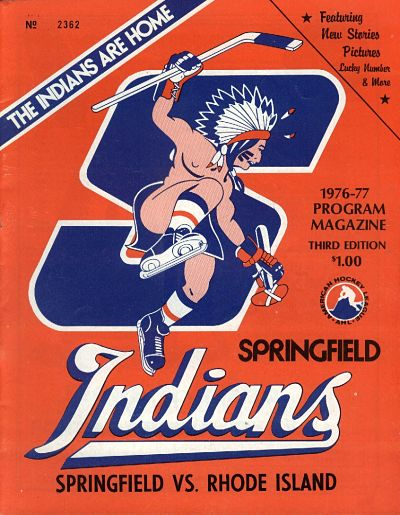
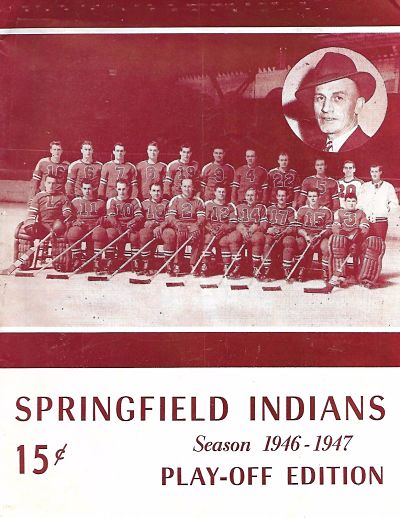
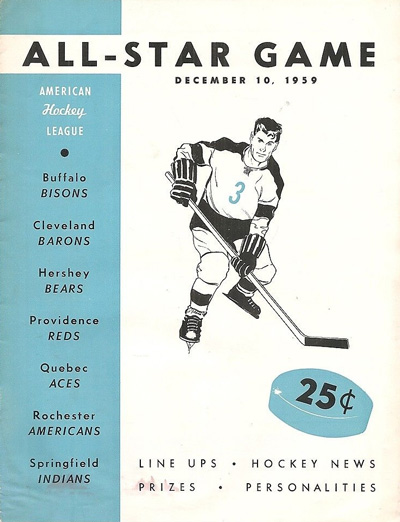
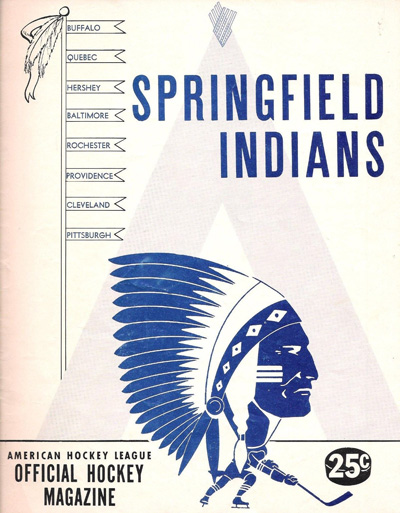
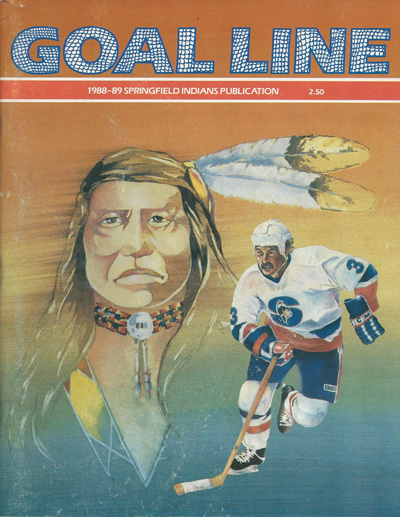
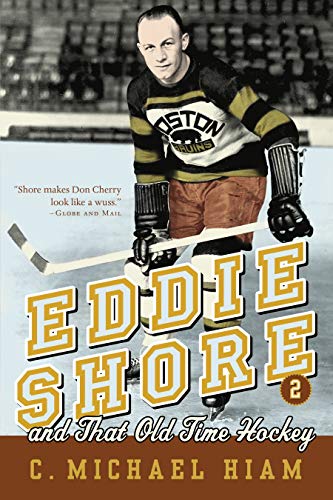
2 Responses
My Uncle Rick Charron was the goalie for the Springfield Indians 1974-75 and won The Calder Cup add photos that I lost in moving. Is there any photos and info of the playoff games? I saw that no photo of him on is stats for that year. The only thing is a recent photo of him and is where about live in Phoenix, Arizona
Hi Michel! I run the Springfield Hockey Heritage Society. We have lots of images in our archives…we’re on facebook (Springfield Hockey Heritage Society). Every summer we have a reunion, and about 30 former players come back to town. This year (2024) it’s on August 3rd and we’ll be honoring the 50th anniversary of that improbable Calder Cup run. The ticket for the event this year features your uncle along with team captain Mark Heaslip being awarded the Calder Cup at center ice. Mark will be with us in August for Hockeyday, as will the Calder Cup…any chance we can get Mr. Charron out here?
We’ll have other players from that 74-75 team too!